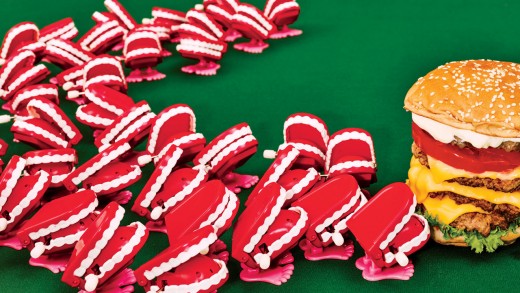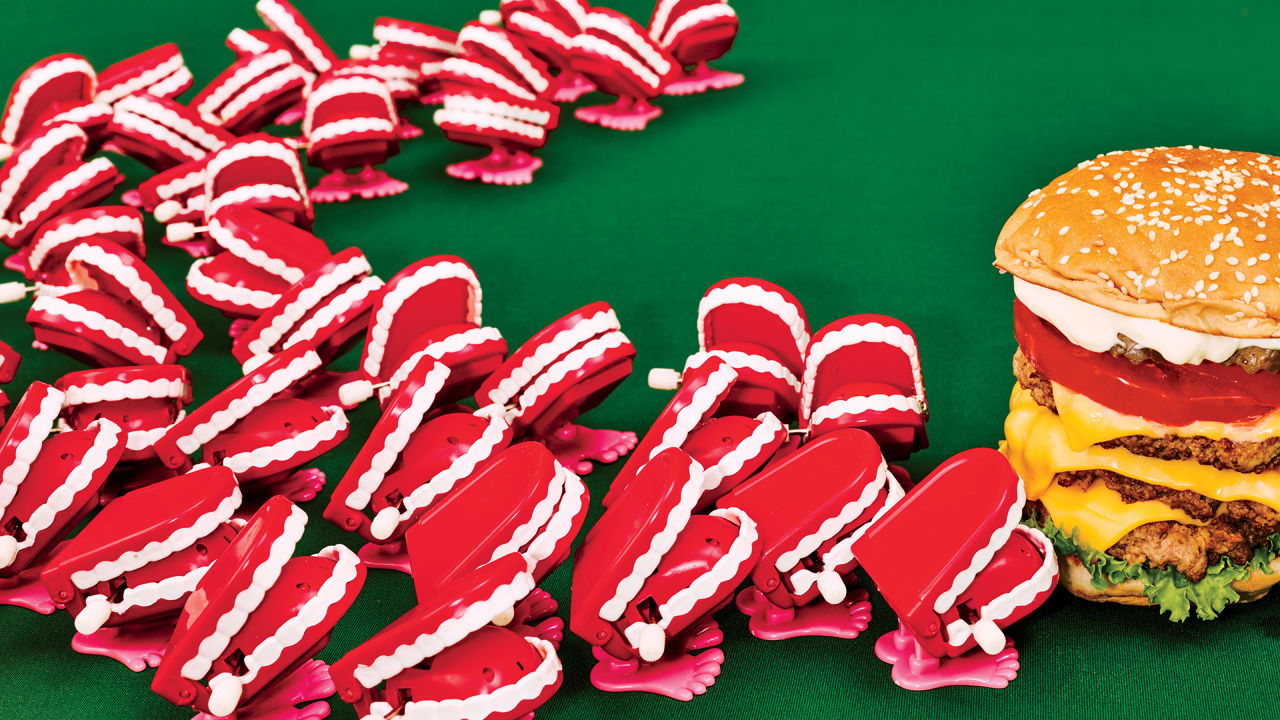How Shake Shack Leads The Better Burger Revolution
How Shake Shack has customers (and many investors) salivating for its burgers and unique brand of hospitality.
“I bet no CEO of a company has said this to his team,” Shake Shack leader Randy Garutti tells a roomful of employees. “I want to challenge you to put us out of business.”
It’s less than 30 minutes before the 11 a.m. grand opening of what will be the 66th Shake Shack—a gleaming, multimillion-dollar outpost located in a Victorian brownstone on Newbury Street, in Boston’s gold coast shopping district. The assembled workers sit riveted, but this last-minute dare is probably not what they were expecting.
Garutti, the company’s CEO, has been up since 3 a.m. He came to Boston on a late-arriving early-morning Amtrak train, and he plans to hit three other Boston-area Shacks before heading home to New York. It has already been a long day. Is he having some kind of stress-induced, Howard Beale–style meltdown? Well, no. He’s just passing along a bit of the wisdom that has made his company one of the hottest restaurant businesses in the country.
Shake Shack has been inspiring excitement since it opened in New York’s Madison Square Park 11 years ago. Created by revered New York restaurateur 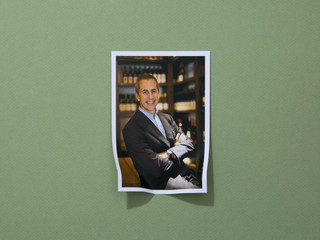 Danny Meyer, it has since grown from a humble burger stand into a global chain with 41 U.S. outlets and 29 overseas franchises in cities such as Moscow, Dubai, Istanbul, and London. Fans line up for its signature ShackBurgers (flavor-packed beef patties served on squishy Martin’s potato rolls and wrapped in nostalgia-triggering wax paper), hot dogs (Chicago-style or with beer-marinated shallots and cheese sauce), concretes (frozen custard blended with artisanal local ingredients; each Shack has its own unique creations), and house beer (ShackMeister ale, made by Brooklyn Brewery). The company went public in January, raising $112 million in an IPO that valued it at around $1.6 billion. At the time Shake Shack announced its impressive first-quarter earnings in May, its stock price had more than tripled.
Danny Meyer, it has since grown from a humble burger stand into a global chain with 41 U.S. outlets and 29 overseas franchises in cities such as Moscow, Dubai, Istanbul, and London. Fans line up for its signature ShackBurgers (flavor-packed beef patties served on squishy Martin’s potato rolls and wrapped in nostalgia-triggering wax paper), hot dogs (Chicago-style or with beer-marinated shallots and cheese sauce), concretes (frozen custard blended with artisanal local ingredients; each Shack has its own unique creations), and house beer (ShackMeister ale, made by Brooklyn Brewery). The company went public in January, raising $112 million in an IPO that valued it at around $1.6 billion. At the time Shake Shack announced its impressive first-quarter earnings in May, its stock price had more than tripled.
That IPO was the highest-profile moment yet for what’s known as the “better burger” category: fast-casual restaurants that crank up the quality on the old hamburger-and-fries concept, targeting savvy diners who care more about how their food tastes and, crucially, where it comes from. Better-burger successes include Five Guys (over $1.3 billion in revenue last year from more than 1,200 locations), Smashburger ($270 million), and Habit Burger ($175 million), which also went public recently. Although these chains are still small—last year they brought in just $2.7 billion out of the $76.9 billion generated by hamburger restaurants in the U.S. overall—they’re having an outsize influence on the burger business, which remains by far America’s largest dining-out category. Shake Shack’s approach in particular—sourcing high-quality natural ingredients, cooking food to order, and placing a major emphasis on the happiness of its customers and employees—both reflects and is driving real change in the marketplace.
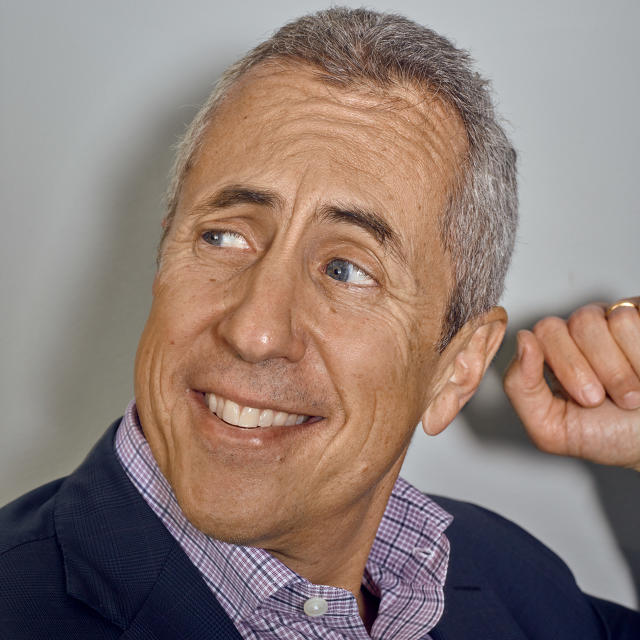
Garutti’s prelaunch pep talk outlines the key elements of his company’s style of radical hospitality. He urges his workers to trust customers and try to be on their side—to always make the “charitable assumption” when dealing with people, and to look out for each other as much as possible. And then there’s that thing about bankrupting the company.
“What do I mean by that?” asks Garutti, who’s dressed CEO casual in a gray blazer and dark blue jeans. “Put us out of business because you are so damn generous with what you give the people who walk in this door. If there’s a kid crying, who’s going to walk over with a free cup of custard? I challenge you to put us out of business with how generous you are. Go do it. Give away free stuff.” This is not merely about the occasional gratis dessert: It’s part of a larger effort to empower employees to do whatever it takes to make customers feel loved.
It’s now just a few minutes before 11, and the Newbury Street team, clad in Shake Shack’s unadorned black uniforms, start taking their stations: cash, bun, grill, prep, custard. Napkin holders: filled. Ketchup cups: stacked. Entryway: Swiffered. “This is a crazy day, man,” says Garutti, a once avid skier and surfer who occasionally drops words like dude into casual conversation. “Crazy day. But we’re good, we’re good.” Then suddenly it’s time, and actual customers are eager to order. As cashiers ready their registers and a grill cook prepares to slap patties onto the kitchen’s Miraclean cooking surface, it’s clear—from the thoughtfully designed space, carefully sourced food, and palpable high spirits of the staff—that nothing here is like what you’ve ever experienced at a fast-food burger establishment.
A manager stands at the head of the room, giving everything a last nervous look-over. “Front of house, are we ready?” she yells.
“Woo-hoo!” comes the reply.
“Back of house, are we ready?”
“Yeah!” everyone yells.
“Okay,” she says. “Let’s do it.”
Wandering through a Shake Shack with Garutti, you come to appreciate how much care goes into every detail, seemingly in service of a single question: How do you bring a high-end dining experience to fast food?
Shacks are built to feel more modern and grown-up than the cartoony, red-and-yellow-decorated junk-food joints that hawk value meals and 40-ounce sodas. You see it in the quiet color scheme (green and black); the slick graphic design (the brand’s clean, modern signage and logo were created by Pentagram’s Paula Scher); the room layout (an open kitchen up front rather than hidden in the back); and the way each outlet is localized to some degree (the Newbury Street store’s reclaimed-wood walls are made out of materials from an old Boys & Girls Club in nearby Watertown).
Garutti makes the rounds at Newbury Street with Zach Koff, Shake Shack’s VP of operations, and Mike Iaia, a regional director of operations, showcasing his obsessive attention to detail. He points to an empty spot on a wall: “Mike, we need a TV there, dude,” he says. “That’s the focal point.” Koff and Iaia make a note for later, even though they aren’t sure it will be logistically possible. Still, Garutti is right: Once you notice it, the space is begging for decoration. “Randy’s really good at walking in and understanding what will create energy,” Koff says. Later, Garutti still can’t let it go. “You’ve gotta do a TV there,” he says, walking past the space again. At another Boston-area Shack, he zeros in on an errant condiment splotch. “A ketchup stain pisses me off to no end,” he says. “There are a million little things that we can do better.”
At the center of Shake Shack’s mission is Danny Meyer’s philosophy of “enlightened hospitality.” In essence, it’s a set of priorities: the idea is to create a welcoming atmosphere first for employees, next for customers, and then for the outside community, suppliers, and, finally, investors. The notion echoes Johnson & Johnson’s 1943 mission statement, which espoused the same priorities and was at the time a groundbreaking corporate credo that led to decades of earnings and dividends growth.
Since opening the Union Square Cafe in New York in 1985, Meyer has perfected a brand of relaxed but highly polished service. Still, applying that concept to a spot that offers cheese fries in cardboard boxes rather than $120 tasting menus is a big leap. “Business, like life, is about how you make people feel,” Meyer writes in his 2006 book, Setting the Table. “It’s that simple, and it’s that hard.” Shake Shack has taken advantage of the burger industry’s traditional emphasis on speed over customer care. “You go to a fast-food restaurant, your expectation is generally low,” says Garutti. “You are almost always dreading what’s going to happen. So, cool, thank you for creating such a low bar for us. We’re going to go way above that. We’re going to make it so that everybody who walks out is saying, ‘I can’t believe what that guy did at Shake Shack!’”
As the principle of enlightened hospitality dictates, it starts with employees. Entry-level Shake Shack workers make $10 an hour in New York and $9.50 everywhere else, which is better than minimum wage but short of the $15 an hour that activists are pursuing for the fast-food industry. The real financial incentives are designed for employees who stick around. The company has created a profit-sharing program called Shack Bucks that can, Garutti says, add as much as $2 an hour to paychecks. And every full-time employee was given the chance to purchase stock in the IPO. “We believe we’re going to pay the market rate to get a great employee,” Garutti says, “and then our job is to promote that person and show them how they can make a lot more money if they choose to be a leader.” Many of Shake Shack’s executives have been groomed from within, and it’s not uncommon for hourly employees to get bumped up to manager, general manager, and beyond.
Opportunity, then, is a big part of the pitch to new workers: Be excellent, be genuine, be friendly and eager and human, and you might have a real future with this company. “We’re not going to program you to be some kind of Shake Shack robot,” Garutti says. “That’s not to say that we don’t give you the guardrails. We have boundaries and we’re very serious about what they are. If you go outside of those, you can’t be here. But within those, there’s a lot of freedom to create and lead in the way that you want.”
Later, at a Shack in suburban Chestnut Hill, Garutti shows how this works in practice. After ordering lunch (two hot dogs, cheese fries, two frozen custard concoctions), he sits down with a manager for a check-in. Garutti is keen to have Shake Shacks feel as lively on the outside as they are inside. He’s been experimenting with Ping-Pong tables and bocce courts at some locations in an effort to connect with surrounding communities and encourage customers to hang out. Should they install an outdoor foosball table here? he wonders. The manager has a different idea. How about a Shack-sponsored music series? “I have access to a lot of bands,” she says, noting that she used to play in one. “If we had interesting, hipper bands that were akin to what we’re doing here, this could be more of a summertime scene.”
“Done,” Garutti says. “All right, we’re off. Thank you for your leadership.”
Danny Meyer’s sixth-floor office looks west across New York’s Union Square Park, the busy downtown crossroads that gave his first restaurant its name. Afternoon light spreads over an expansive bookshelf next to his desk as he pours water from a glass pitcher etched with the name of his company, Union Square Hospitality Group, which operates beloved New York institutions such as Gramercy Tavern and The Modern. Taking a sip, he shows off a framed photo of the 2004 opening of the first Shake Shack, an outdoor kiosk located a quick walk uptown in Madison Square Park.
Shake Shack’s headquarters occupy the floor right below this one, and though the thoughtful, soft-spoken Meyer is no longer involved with the burger chain’s day-to-day operations, he remains chairman of the board and continues to help steer its overall strategy. Meyer is also the guy who dreamed up the concept back in the early 2000s, when neither he nor anyone else imagined that a little concession stand in the park would ever be more than a fun, one-off novelty.
It started with an urban-revival project. In the 1990s, Madison Square Park had fallen into disuse, and Meyer—who was planning to open a pair of restaurants on the park—was at the center of an effort to turn it around, helping to lead a group called the Madison Square Park Conservancy. One initiative involved hosting sculpture exhibits, and when an artist wanted to incorporate a working hot-dog cart into his installation, Meyer volunteered. “I figured, what if we could use something as mundane as a hot-dog cart to prove that enlightened hospitality doesn’t only work in white-tablecloth restaurants?” he says. “This is where the whole vision starts: that the park be beautiful, safe, and used.” Meyer hired off-season coat-check workers from his restaurants to operate the place and donated a percentage of any profits to the park.
Though it lost money, the stand attracted crowds, and Meyer decided to bring it back for the next two summers. When New York’s parks department approved a full-time food kiosk in the park, he was the clear choice to run it. “I was obviously not thinking about an ongoing business,” he says. “It was never our vision that it would turn into more than one Shake Shack. I was thinking about what it could do for the park.”
Meyer sketched out a quick menu based on places he loved growing up in St. Louis: Fitz’s Root Beer, Steak ’n Shake, Ted Drewes Frozen Custard. (That handwritten list of offerings, which is remarkably similar to Shake Shack’s current menu, now hangs on the wall of Garutti’s office.) The kiosk opened on June 12, 2004, offering a high-gloss take on burgers, hot dogs, and milkshakes with a focus on quality ingredients and extraordinary service. It was an instant local phenomenon, and soon Shake Shack, as it had been named, was as famous for its epic lines as for its food.
Over the next few years the crowds kept coming, undaunted by wait times that could stretch to an hour or longer. (A few years ago, the company installed a “Shack Cam” so people could monitor the line via the web.) But Meyer—who had waited nine years to open his second high-end restaurant—resisted the obvious next step. “People were saying, ‘You’re crazy not to build another one of these things,’” he recalls. Eventually he relented, figuring another location might help alleviate the crowds in Madison Square. But he was busy with his restaurant empire and didn’t have time to steer the hamburger expansion.
One day, Meyer asked Garutti, then head of operations for the entire Union Square Hospitality Group, to chat. Garutti quickly realized that Meyer was asking if he’d walk away from one of the restaurant world’s plummier positions to open a neighborhood fast-food joint. The Cornell University School of Hotel Administration graduate says that “it took about 10 seconds.”
It was a real gamble. “Is it just the park that made this thing what it is?” Garutti remembers thinking. “Is it just a fluke?” That second Shack—which opened across the street from the American Museum of Natural History in October 2008—would become the template for the entire chain: the design, how the kitchen operated, even the kind of music they played in the dining room. “We really thought about every part of that one restaurant,” says Shake Shack culinary director Mark Rosati, who left a job cooking at Gramercy Tavern to become one of the original managers of the Upper West Side location. (Seven years later, that Shack’s entire management team remains with the company.) “We literally changed the place 100 times until we had that perfect vibe. In fine dining, you really are trained to think about all those details.”
Shack 2 was a fast hit. “The first year it did as much as Madison Square Park,” says Garutti. “We said, ‘Oh, my God, we’ve got something special here.’ That’s the moment where we said, ‘Okay, let’s start to build a company.’ ”
From there, things moved fast. The New York Mets asked to include a Shake Shack in their new ballpark, Citi Field, which opened in 2009 (Shake Shack now has seven such stands in airports, train stations, and sports venues). The following year, the company opened two additional Shacks in New York and the first outside the city, in Miami Beach. When a Kuwaiti developer approached the company about licensing the brand for a string of restaurants in the Middle East, Shake Shack went global. Suddenly, Garutti found himself at the helm of a serious, fast-expanding business.
In one important respect, though, that second outpost was a failure. “It was almost as if excitement over the second Shake Shack kindled even more interest in the first,” Meyer says. “The line got longer.”
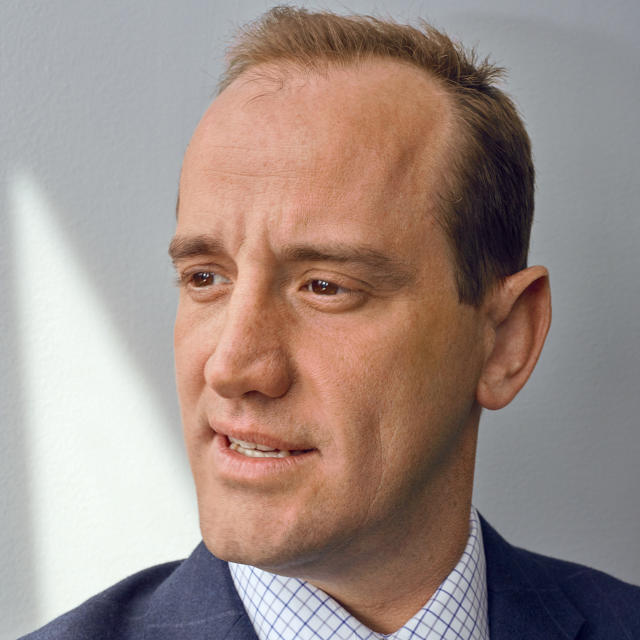
The gleaming metal heart of the whole Shake Shack operation lies behind a pair of swinging red doors inside an immaculately clean, 35,000-square-foot facility not far from the Lincoln Tunnel in northern New Jersey. This is the headquarters of Pat LaFrieda Meat Purveyors, New York’s premier wholesale vendor of fine-dining beef. When Shake Shack started, Meyer and Garutti tapped LaFrieda to create a blend specifically tailored to their unusual cooking method, which involves caramelizing thin patties on a flat top rather than grilling or broiling them. Much like the Coca-Cola formula, the secret recipe is only known to a handful of Shack executives.
LaFrieda’s custom-built patty-shaping machine—there are three of them, with two on reserve in case of malfunction—is roughly the size of a small Zamboni. Meat goes in the top and perfectly formed pucks come out the side, ready to be boxed up and shipped out, unfrozen, to Shacks from D.C. to Boston. The machine cranks out about 80,000 of them every night.
Shake Shack’s beef is at the center of its identity, both because of how the burgers taste and because of their pedigree: humanely raised, antibiotic- and hormone-free, ground fresh from full-muscle cuts rather than scraps or what has become known as—shudder—pink slime. “I don’t know anyone who’s ever taken a patty out of a McDonald’s burger and said, ‘Wow, this meat is great,’” says LaFrieda, sitting in a lounge area above the warehouse. “You could certainly do that at Shake Shack. We’re making beef fresh every night. It’s going to the restaurant the next day. There’s no better experience that you could possibly have.”
Increasingly, a segment of American diners, especially those between the ages of 18 and 34, is looking to spend its dining-out dollars at restaurants that focus on natural ingredients and sustainability. “Whether it’s Whole Foods or other companies like [ours], we are creating an expectation of excellence, transparency, sustainability,” Garutti says. In keeping with these principles, Shake Shack has worked with its bun supplier to omit genetically modified organisms and has removed corn syrup from its burger sauce and custard. “The younger generation is not all of a sudden going to say, ‘I want less quality food, I want to know less about my food like my parents did,’” says Garutti. “No way.” Nowhere is this mandate more imperative than with the meat inside that GMO–free bun. But there’s a problem: The supply of humanely raised, drug-free beef remains limited.
Making sure Shake Shack doesn’t run out of beef is a big part of Jeff Amoscato’s job. As VP of supply chain and menu innovation, he’s responsible for sourcing the company’s meat—along with its bacon, buns, pickled cherry peppers, and every other ingredient that goes into its offerings. One of his biggest challenges is ensuring the Shacks never encounter the sort of shortages that have plagued Chipotle. Earlier this year, the burrito purveyor stopped selling pork in around a third of its stores after it decided a major supplier wasn’t meeting its standards. When Garutti heard about the situation, he asked Amoscato and culinary director Mark Rosati to talk. “He was just like, ‘By the way, guys, where are we at with this stuff?’” Rosati says.
Amoscato has developed relationships with both ranchers and large natural-meat processors, such as Kansas-based Creekstone Farms. “I’ll get in the truck with their cattle buyer and go around to some of the ranchers,” says the former manager of Meyer’s restaurant The Modern, who looks like he’d be far more at home sipping rioja than roping steer. “We get to understand what they’re doing. We’re working to convince more farmers that this is a better way of growing cattle.”
Chipotle has more than 1,800 outlets; Shake Shack has fewer than 70. As the company grows, it may face challenges maintaining such a pristine supply. But Garutti feels good about what Shake Shack has accomplished so far, with its forward-looking commitment to purchasing high-quality, antibiotic- and hormone-free animals—often before they’re even born. “We say, ‘Hey, we’ll buy x amount,’” he explains. “‘You raise them the right way, we’ll buy them.’ It’s traveling the country, having contracts in place, and understanding the global beef supply chain to make sure that we’re ready for the growth we’re going to have.” The company also has backup plans in place should something unexpected go wrong with its supply.
Naturally raised meat is still a small percentage of the market, but consumer demand for better beef is having an impact. Amoscato says that he shows ranchers photos of Shake Shack’s infamous crowds to drive home how excited customers are for this kind of meat. “Look at this Shake Shack in Madison Square Park,” he tells them. “There’s a line of people waiting for our burgers. They want that better product.”
After leaving the Chestnut Hill Shack, Garutti sits in the back of an Uber car, thumbing through emails on his way to visit another one of his Boston-area outposts. The driver, it turns out, loves Shake Shack. His family waited in line to eat at the first Boston Shack the day it opened in March 2013, and now they’re fans. “Every now and then, you’re going to give your daughter a burger,” Garutti tells him. “Not every day. But when you do, you want to know that it’s good. Where are you going to take her?” The driver glances back at him in the rearview mirror. “We’re not going to McDonald’s,” he says. “That’s for sure.”
That attitude has a lot to do with Shake Shack’s success—and illuminates McDonald’s recent woes. Its revenues have been slipping in dramatic fashion, with sales down for six straight quarters, including an 11% revenue dip in the first three months of 2015. In March, the company appointed a new CEO, Steve Easterbrook, who has implemented changes that seem directly aimed at the sort of customers who are increasingly turning towards Shake Shack and other fast-casual spots. Less than a week into Easterbrook’s tenure, the company announced it would phase out the use of certain antibiotics in its poultry over the next two years. Recently, McDonald’s has also been experimenting with a line of larger, pricier, all-sirloin burgers.
But while McDonald’s problems get a lot of attention, Shake Shack is far from toppling the company and its $27 billion 2014 revenues any time soon. And other leaders in the quick-serve hamburger category—Burger King, Wendy’s, and Sonic—are in much better shape than Mickey D’s. “I don’t think there’s any doubt that fast-casual and the [better-burger] guys have had some impact,” says Sonic CEO Clifford Hudson, whose fast-growing company saw a 3.5% increase in same-store sales in fiscal 2014 and plans to open 1,000 new outlets over the next 10 years. “But we’ve got positive momentum in a way that you might not expect, given the competition from them.”
With its January IPO, Shake Shack now faces the same intense public scrutiny as those long-established burger barons. Investors are the last constituent in Danny Meyer’s enlightened-hospitality hierarchy, but early reactions on Wall Street have been mixed. Though it has beaten earnings estimates for its first two quarters as a public company, some analysts remain skeptical. For a business with a relatively high market cap, it has a small number of locations, modest revenue ($118.5 million in 2014, a 43.7% increase over the previous year), and intense competition from other better-burger chains, fast-casual peers like Chipotle and Panera, and those global down-market behemoths with their Big Macs and Baconators.
Yet Shake Shack says it will hew to its long-held plans to grow slow. This year the company expanded to Baltimore and Austin, and by the end of 2015 there will be additional Shacks in existing markets such as Chicago and Orlando. The first California Shack is scheduled for 2016, in West Hollywood. The goal, for now, is to open 10 a year, with the aim of eventually reaching 450. They’ll also continue to license the brand overseas; the first of 10 planned Japanese Shacks will open in Tokyo next year.
In a world where McDonald’s boasts more than 14,000 stores in the U.S. alone, those ambitions seem modest. But Meyer and Garutti have seen what happens when outlets expand too fast. “Danny thinks long-term dollars better than anybody,” Garutti says. “It’s really cool to know that there isn’t pressure to just make money, make money, make money. If we build this brand right, we’re all going to benefit.”
And Shake Shack is having a big impact. “What’s exciting is that they are testing a theory that food that is good, that is clean, that is fair, can be integrated into a fast-casual template,” says Richard McCarthy, executive director of advocacy group Slow Food USA. “Will people spend extra for food that is in line with their values? Is this an esoteric niche, or is it something that can break through to everyday people?”
Danny Meyer believes it can break through—and that it already has. “It takes companies like Shake Shack, like Chipotle, like Whole Foods to make those tougher, more expensive choices,” he says. “I want to buy food that makes me feel good to be buying it. I want to do business with companies that make me feel good to be doing business with them. I care about the earth and my family and my own body. We’ve reached a critical mass where there’s just no going back. And I think that’s awesome.”
It’s 3 p.m. when Garutti arrives at his last destination: a brand-new Shack in the Boston suburb of Dedham, which opened to the public the previous day (he missed that launch because he was coaching his son’s Little League game). Located in a high-end outdoor mall called Legacy Place, it’s a relatively low-key outpost tucked next to a Uniqlo. This is the kind of Shack the company will need to nail as it expands—a casual local spot where people want to hang out, have a ShackBurger and a concrete, and spend time with their friends.
It’s the busiest of the locations Garutti has visited on this chilly Monday afternoon in early March, full of teenagers from a nearby high school who are giddily digging into salted-caramel ice cream and hopping from table to table to gossip and laugh. These are some of Shake Shack’s most dedicated customers: tech-immersed young people who are here as much for the aura as the cuisine. “You just know when a Shack feels good,” says Garutti, looking around approvingly. “This is what you want to feel. When people talk about better burgers or whatever, this generation of kids is going to eat here. Like, kids are going to break up over a milkshake today. That’s what Shake Shack is!”
Still, not everything is perfect. While Garutti is debriefing a manager, a couple of high schoolers alert a staffer to a problem, and she immediately shares it with the CEO. “They just tried to Snapchat-tag us,” she informs him, “and we’re not on it. They were telling me, ‘Oh, my God, you have to get this immediately!’” Garutti is not happy. “That’s so lame,” he says as he pulls out his phone to notify someone back at Shack HQ. “I’ll find out what’s up. I’m very surprised. We’re pretty huge in social media.” (Shake Shack has more than 170,000 Instagram followers.)
In the real world, though, things seem to be running smoothly. The Dedham staff—which includes veterans from other locations and a number of local high school students—is relaxed and cheerful, and fresh-smashed LaFrieda pucks are sizzling on the Miraclean in waves of eight. “The vibe in here is so strong,” Garutti says. Though the place is busy, it isn’t the madhouse you might find at a Manhattan Shack, and there is no sign of the sort of snaking line that remains a Shack signature. But just wait. “Get ready,” Garutti tells the manager, a knowing smile breaking across his face. “Because this weekend is going to be mental.”
Fast Company , Read Full Story
(163)

